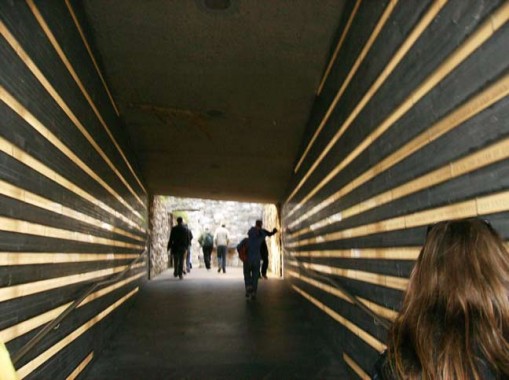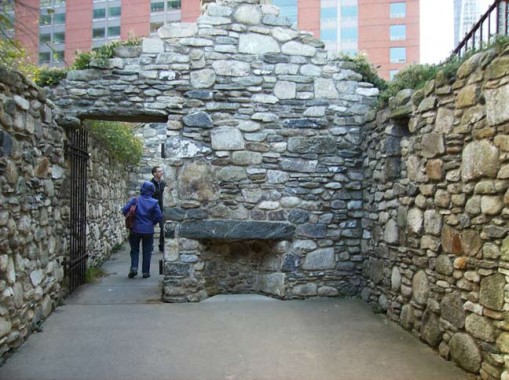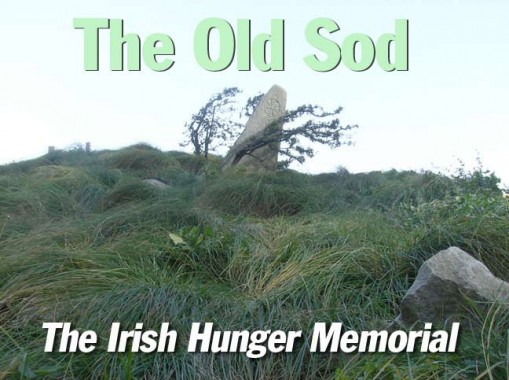I haven’t spent enough time in Battery Park City, the 40-year-old neighborhood built on landfill above Battery Park, piecemeal beginning in the 1970s. I’m working with limited time available, but I recently read that the landfill did not come from excavations for the first World Trade Center constructed from 1970-1974. From whence did it come? I do plan on giving BPC a longer, belated look in a couple of years, once there’s some semblance of stabilization from the relentless construction and crowding in the area — if that ever happens.

I have been able to do some gradual exploring, though, and there are some quiet pockets, such as the Irish Hunger Famine Memorial. The memorial is dedicated to raising awareness of the Great Irish Famine that killed up to a million in Ireland between the years 1845 and 1852, and the resulting waves of immigration to the United States beginning in those years. The Memorial occupies a half acre at North End Avenue and Vesey Street and was designed collaboratively by artist Brian Tolle, landscape architect Gail Wittwer-Laird, and 1100 Architect. It was dedicated on July 16, 2002.

The landscaped plot employs stones, flora and soil imported from the western coast of Ireland, and incorporates an actual 19th-century Irish cottage. The names of some of the immigrants are displayed on the sides of a lengthy corridor, a dark passageway that leads to an open space that looks larger than it does given the limited half-acre space. Visitors can mentally shut off the traffic noise and pretend they’re on a high hill in the western counties.
Following the famine, 800,000 Irish immigrants found their way to the United States, a good percentage of whom settled in New York City.
11/25/13
